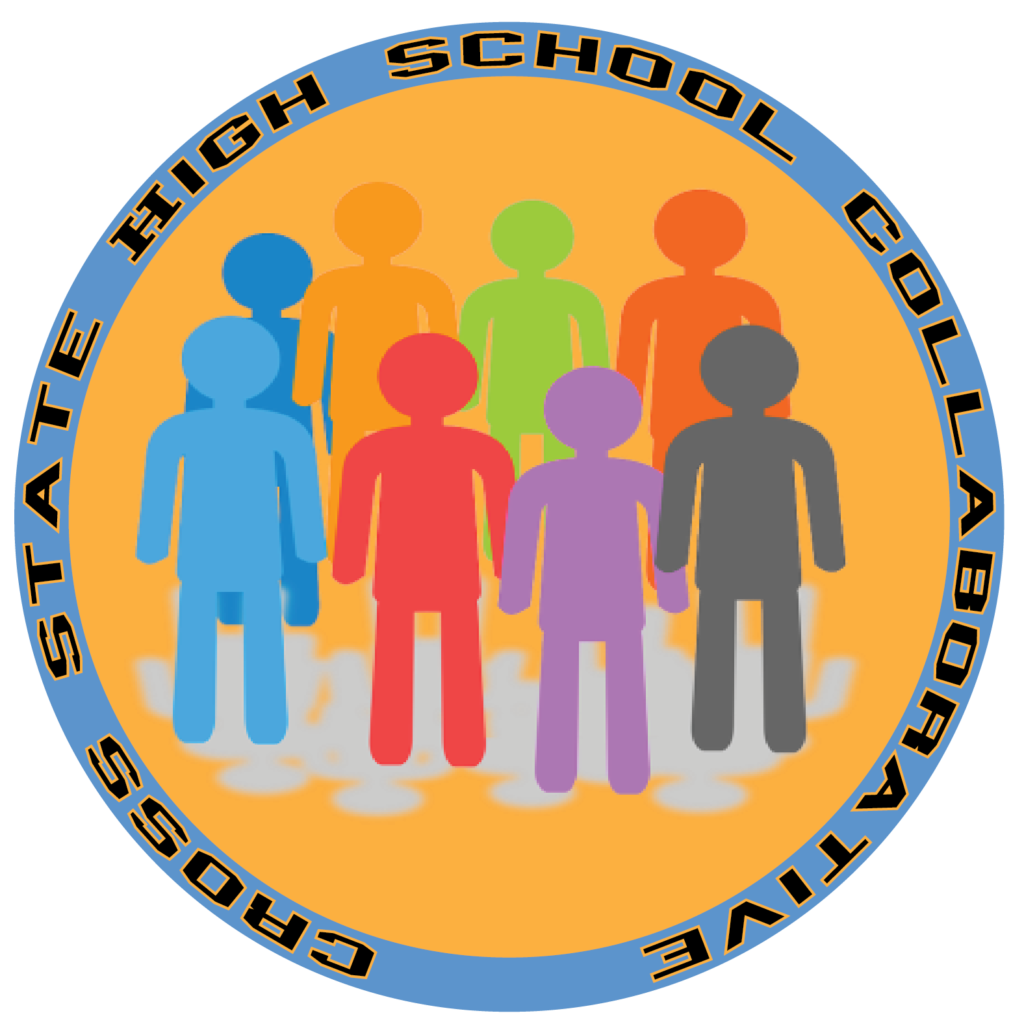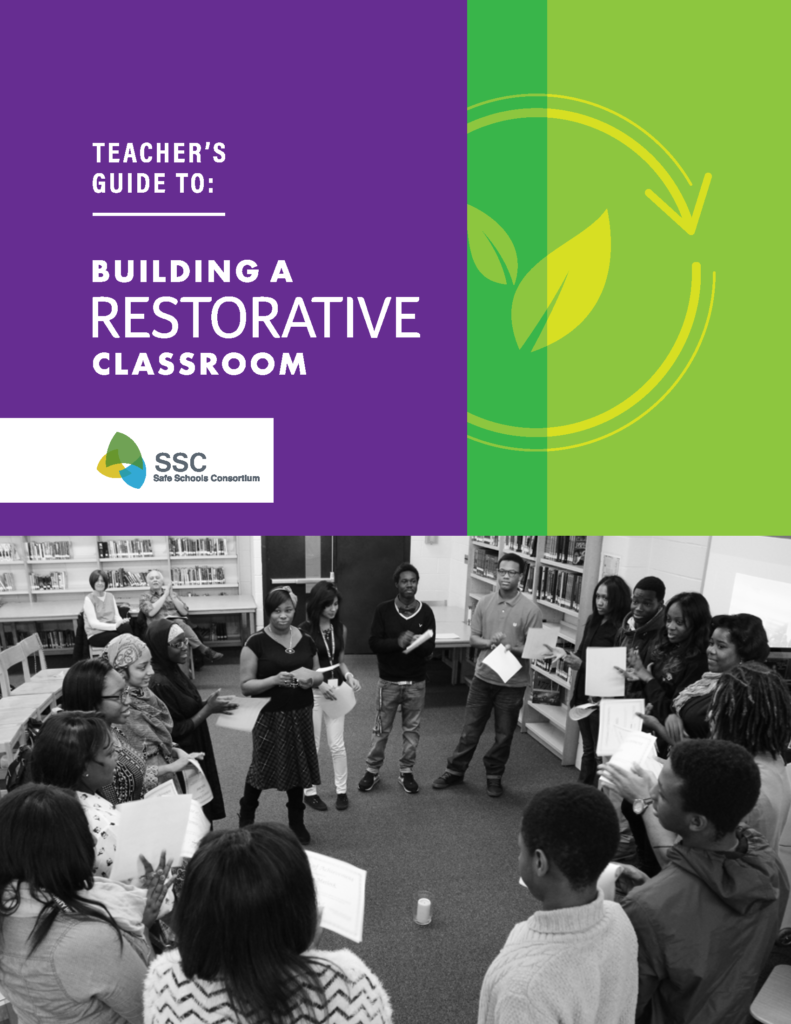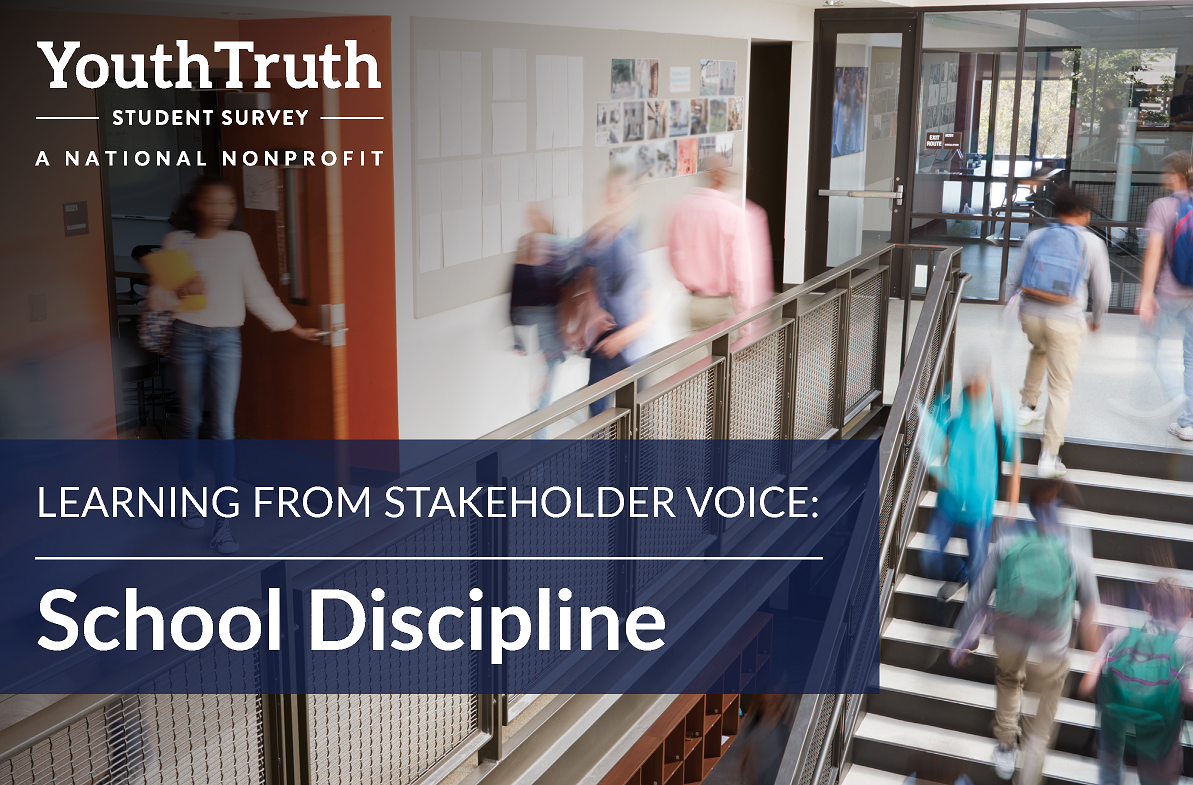Can Dropout Factory Research Save a COVID Generation
January, 2021-In its most recent episode of THIS WEEK IN EDUCATION, EJ Carrion interviews Robert Balfanz to get his perspective on the most recent report from the National Student Clearinghouse that showed that college enrollment for low-income high school graduates declined by 29.2 percent. Read more. . .
NEW–January, 2021
Implications for Educational Practice of the Science of Learning and Development
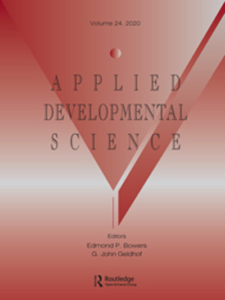 This article draws out the implications for school and classroom practices of an emerging consensus about the science of learning and development, outlined in a recent synthesis of the research. Situating the review in a developmental systems framework, we synthesize evidence from the learning sciences and several branches of educational research regarding well-vetted strategies that support the kinds of relationships and learning opportunities needed to promote children’s well-being, healthy development, and transferable learning. In addition, we review research regarding practices that can help educators respond to individual variability, address adversity, and support resilience, such that schools can enable all children to find positive pathways to adulthood. Click to Download (PDF)
This article draws out the implications for school and classroom practices of an emerging consensus about the science of learning and development, outlined in a recent synthesis of the research. Situating the review in a developmental systems framework, we synthesize evidence from the learning sciences and several branches of educational research regarding well-vetted strategies that support the kinds of relationships and learning opportunities needed to promote children’s well-being, healthy development, and transferable learning. In addition, we review research regarding practices that can help educators respond to individual variability, address adversity, and support resilience, such that schools can enable all children to find positive pathways to adulthood. Click to Download (PDF)
Click here to view the article online with additioinal references & data.
Featured Resource
Using Cogenerative Dialogue to Address Heightened Emotions with Difficult Students
Pei-Ling Hsu’s paper provides interesting outcomes for the use of cogenerative dialogue (cogen) in science education. In Hsu’s study, cogens were used to discuss and address issues about the progress of a project-based learning (PBL) science internship undertaken by nine secondary school students and scientists working at a university (Hsu 2019). Read more. . .
What the Evidence Says
As you design, think about how to keep students at the center of their educational experiences. Student apathy, lack of motivation, and non-productive behaviors are factors which limit learning and underlie teacher stress and burnout. The longer students are in school, the less hopeful they become regarding their educational experiences. This has resulted in higher rates of student and teacher absenteeism, higher rates of student suspension and less learning ultimately.
A shift can occur that places students at the center when redesigning schools, which aligns students’ interest with teachers and administrators desired outcomes. This section presents what the evidence-based says about how to produce this change of ideas and practices within schools, as well as how to keep all students on track to school success.
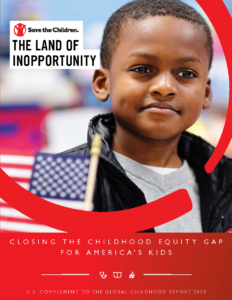 **NEW**JUNE, 2020**
**NEW**JUNE, 2020**
The Land of Inopportunity: Closing the Childhood Equity Gap for America’s Kids Where a child grows up can determine their prospects in life more than you might guess. In most states across America, there are stark differences between communities that provide children the childhoods they deserve, and those where childhoods end too soon. These disparities threaten the future of our next generation, and they are being magnified by the effects of the coronavirus pandemic. Download the PDF
Featured Resource
Study Shows Where ‘Growth Mindset’ Training Works (And Where It Doesn’t)
A large nationwide study, published in the journal Nature has found that teaching ninth graders to maintain a “growth mindset” toward learning—stressing that their minds are like muscles that can get stronger with use—can result in higher test scores. Read the article.
**NEW**JULY, 2020**
Mindsets and the Learning Environment: Understanding the Impact of “Psychologically Wise” Classroom Practices on Student Achievement An ideal learning environment develops students’ feelings of competence, connectedness, and purpose. When these conditions are met, students are more likely to choose challenging tasks, persist in the face of difficulty, learn more deeply, and achieve at higher levels. Download the PDF
**NEW**JULY, 2020**
The Relationship Among Classroom Growth Mindset Climate, Trust and Respect, and Student Performance in Mathematics This study examines how growth mindset classroom climates – defined as students’ shared perception that the teacher believes that all students can master the class material using hard work, effective learning strategies, and asking for help when needed – shape students’ academic experiences and performance. Download the PDF
**NEW**JULY, 2020**
Mindsets and the Learning Environment: Evidence from Half a Million Students on the Importance of Belonging in Schools Students This study examines how self-reported sense of belonging in school is related to gains in a range of student test and non-test outcomes. Download the PDF
**NEW**JUNE, 2020**
What We Know About Belonging from Scientific Research Students with a sense of belonging in school feel socially connected, supported, and respected. They trust their teachers and their peers, and they feel a sense of fit at school. They are not worried about being treated as a stereotype and are confident that they are seen as a person of value. Download the PDF
**NEW**JUNE, 2020**
Framework for Transformational Change Knowledge from educational practice and research together clearly points towards a whole-child purpose as the driving force of school transformation, which is actualized through a set of systems, structures and practices that promote a supportive environment, developmental relationships and integrated academic, skill and mindset development for all students. This type of transformational school change critically relies on strong leadership and shared ownership and responsibility of all school community members. Download the PDF
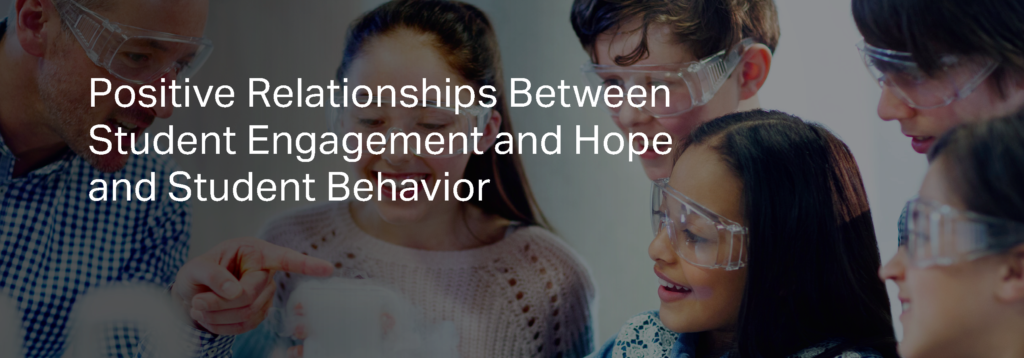 Gallup Study: Positive Relations Between Student Engagement & Hope and Student Behavior this study has proven engagement and hope measurements to be significantly negatively related to student discipline and behavior outcomes at a school level. Consequently, this study has provided a path for districts and schools to proactively build a positive culture and environment at the school and classroom level that supports students emotionally and socially — while positively impacting student behavior outcomes. Read more. . .
Gallup Study: Positive Relations Between Student Engagement & Hope and Student Behavior this study has proven engagement and hope measurements to be significantly negatively related to student discipline and behavior outcomes at a school level. Consequently, this study has provided a path for districts and schools to proactively build a positive culture and environment at the school and classroom level that supports students emotionally and socially — while positively impacting student behavior outcomes. Read more. . .
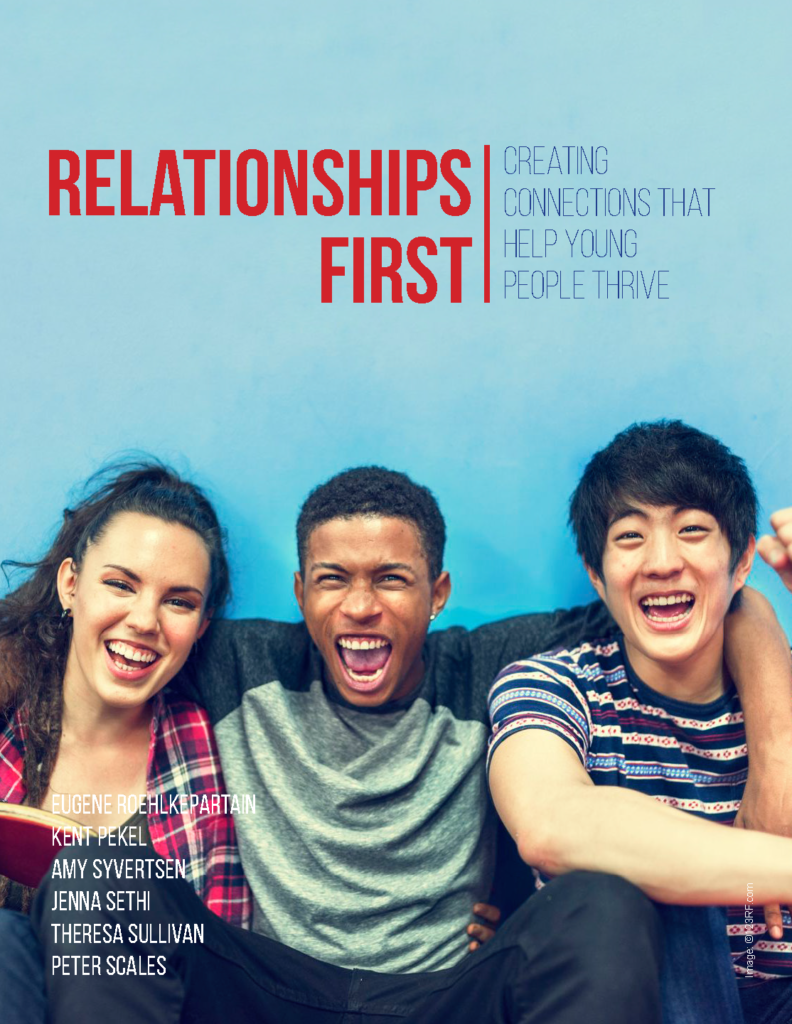 Relationships First: Creating Connections that Help Young People Thrive “It’s all about relationships.” That statement has become a cliché, whether the focus is on parenting, mentoring, teaching, coaching, raising money for a cause, getting a job, or finding a partner. And the cliché has research behind it: We’ve known for decades that high-quality relationships are essential to young people’s growth, learning, and thriving—including for those young people who face serious challenges in their lives and in the world around them.
Relationships First: Creating Connections that Help Young People Thrive “It’s all about relationships.” That statement has become a cliché, whether the focus is on parenting, mentoring, teaching, coaching, raising money for a cause, getting a job, or finding a partner. And the cliché has research behind it: We’ve known for decades that high-quality relationships are essential to young people’s growth, learning, and thriving—including for those young people who face serious challenges in their lives and in the world around them.
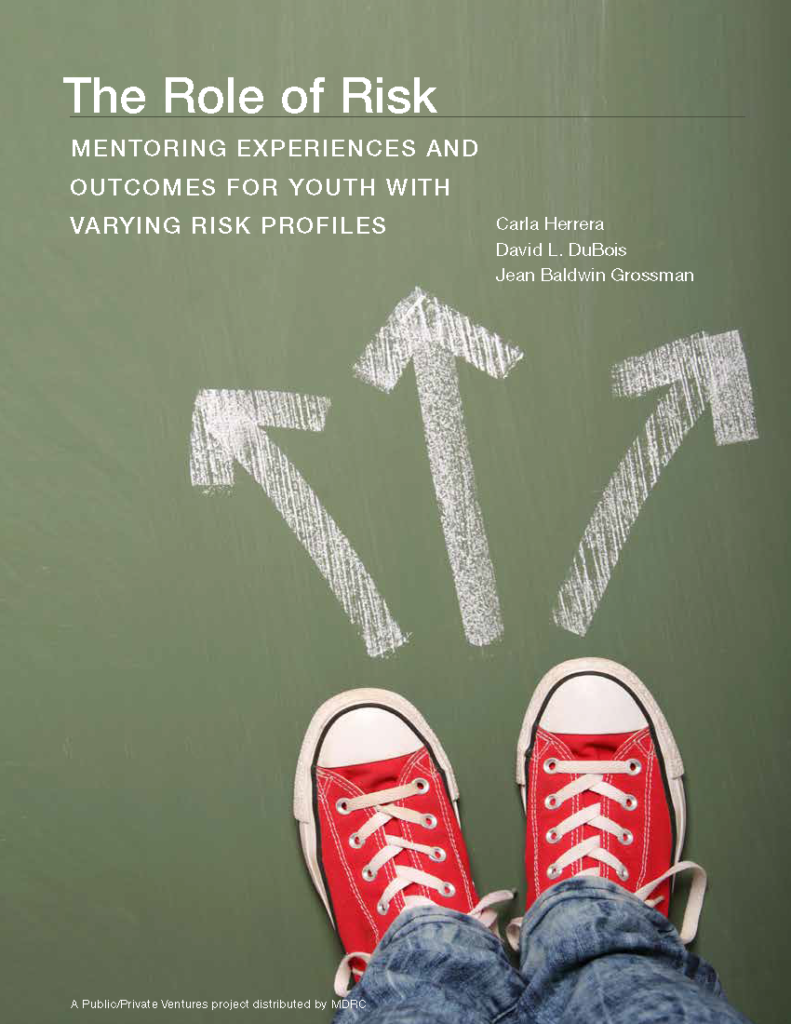 The Role of Risk: Mentoring Experiences and Outcomes for Youth with Varying Risk Profiles presents findings from the first large-scale study to examine how the levels and types of risk youth face may influence their relationships with program-assigned mentors and the benefits they derive from these relationships. Carla Herrera, David L. DuBois, Jean Baldwin Grossman.
The Role of Risk: Mentoring Experiences and Outcomes for Youth with Varying Risk Profiles presents findings from the first large-scale study to examine how the levels and types of risk youth face may influence their relationships with program-assigned mentors and the benefits they derive from these relationships. Carla Herrera, David L. DuBois, Jean Baldwin Grossman.
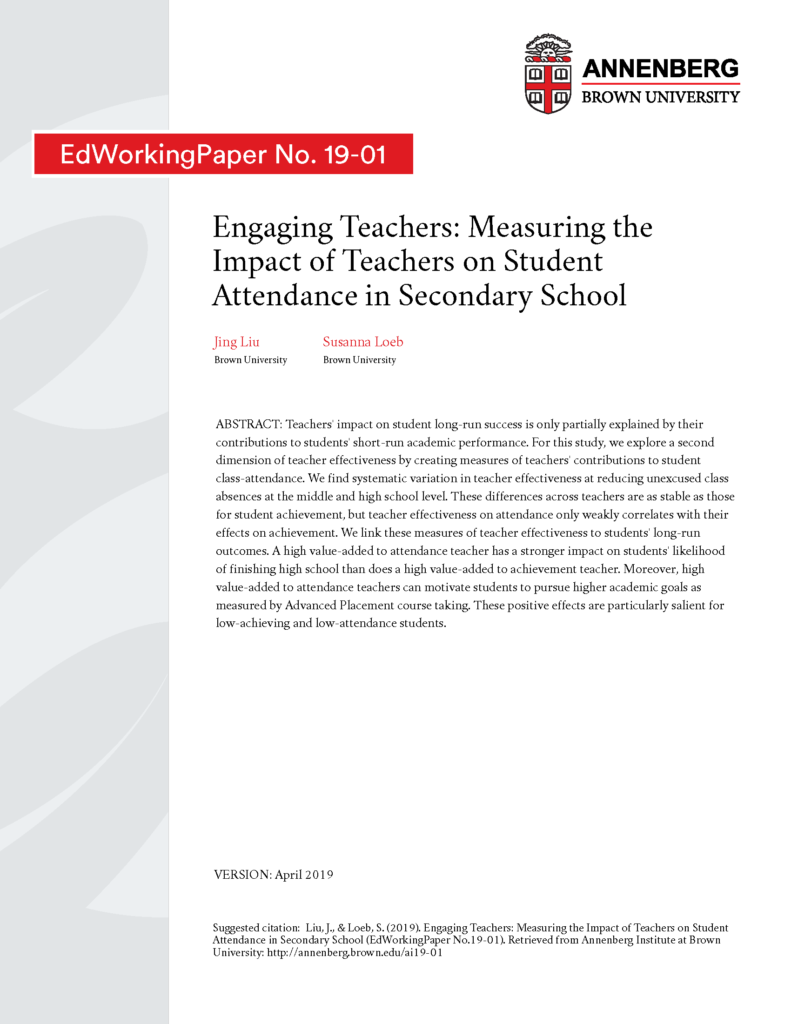 Engaging Teachers: Measuring the
Engaging Teachers: Measuring the
Impact of Teachers on Student
Attendance in Secondary School Teachers’ impact on student long-run success is only partially explained by their
contributions to students’ short-run academic performance. For this study, we explore a second dimension of teacher effectiveness by creating measures of teachers’ contributions to student class-attendance.
![]() School-Based Mentoring Programs: Using Volunteers to Improve the Academic Outcomes of Underserved Students the overarching aim of this paper is to enrich the field’s understanding of how volunteer mentors can best support the academic mission of schools. Amanda Bayer, Swarthmore College; Jean Grossman, Princeton University; and David DuBois, University of Illinois at Chicago.
School-Based Mentoring Programs: Using Volunteers to Improve the Academic Outcomes of Underserved Students the overarching aim of this paper is to enrich the field’s understanding of how volunteer mentors can best support the academic mission of schools. Amanda Bayer, Swarthmore College; Jean Grossman, Princeton University; and David DuBois, University of Illinois at Chicago.
Building Hope, Purpose, and Agency
 Going to school is optional: Schools need to engage students to increase their lifetime opportunities is a report featured on the Brookings website by authors Jing Liu, Doctoral student, Economics of Education – Stanford Graduate School of Education and Susanna Loeb, Nonresident Senior Fellow – Economic Studies, Center on Children and Families.
Going to school is optional: Schools need to engage students to increase their lifetime opportunities is a report featured on the Brookings website by authors Jing Liu, Doctoral student, Economics of Education – Stanford Graduate School of Education and Susanna Loeb, Nonresident Senior Fellow – Economic Studies, Center on Children and Families.
Click to Read the Report Online
![]() Reducing socioeconomic disparities in the STEM pipeline through student emotion regulation Increasing access to Science, Technology, Engineering, and Math (STEM) fields can create career opportunities. Yet many students, especially those from lower-income backgrounds, find the high-stakes exams in courses necessary for STEM success to be stressful and anxiety provoking. Critically, emotion regulation interventions cut in half the course failure rate for lower-income students. Formany students, success is based on more than STEM knowledge—their ability to regulate emotions is important too.
Reducing socioeconomic disparities in the STEM pipeline through student emotion regulation Increasing access to Science, Technology, Engineering, and Math (STEM) fields can create career opportunities. Yet many students, especially those from lower-income backgrounds, find the high-stakes exams in courses necessary for STEM success to be stressful and anxiety provoking. Critically, emotion regulation interventions cut in half the course failure rate for lower-income students. Formany students, success is based on more than STEM knowledge—their ability to regulate emotions is important too.
***NEW***JULY, 2020***
Loss of Institutional Trust Among Racial and Ethnic Minority Adolescents: A Consequence of Procedural Injustice and a Cause of Life-Span Outcomes Download the PDF
![]() The Association Between Student Reports of Classmates’ Disruptive Behavior and Student Achievement this study examines the relation between student reports regarding disciplinary infractions to student achievement, with a special focus on classroom disruptions.
The Association Between Student Reports of Classmates’ Disruptive Behavior and Student Achievement this study examines the relation between student reports regarding disciplinary infractions to student achievement, with a special focus on classroom disruptions.
![]() Student Trust in Teachers and Student Perceptions of Safety this study examined the effects of student trust in teacher and student perceptions of safety on identification with school. Data was collected from one large urban district in an eastern state.
Student Trust in Teachers and Student Perceptions of Safety this study examined the effects of student trust in teacher and student perceptions of safety on identification with school. Data was collected from one large urban district in an eastern state.
![]() Too Scared to Learn? The Academic Consequences of Feeling Unsafe in the Classroom using a unique panel data set of survey responses from New York City middle school students, this article provides insight into the relationship between feelings of safety in the classroom and academic achievement.
Too Scared to Learn? The Academic Consequences of Feeling Unsafe in the Classroom using a unique panel data set of survey responses from New York City middle school students, this article provides insight into the relationship between feelings of safety in the classroom and academic achievement.
![]() Authoritative School Climate and High School Student Risk Behavior this study tested the hypothesis that an authoritative school climate characterized by strict but fair discipline and supportive teacher–student relationships is conducive to lower risk behavior for high school students.
Authoritative School Climate and High School Student Risk Behavior this study tested the hypothesis that an authoritative school climate characterized by strict but fair discipline and supportive teacher–student relationships is conducive to lower risk behavior for high school students.
Download the Report (PDF)
Student Voice
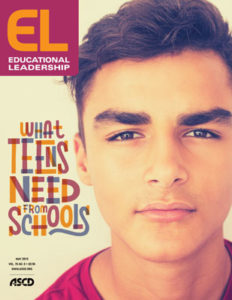 Teen Voices: What We Really Need from Schools To get some insider perspectives for this issue, Educational Leadership editors reached out to several teens across the country, inviting them to tell us about their school experiences and what their biggest challenges are. We asked them: What do you most need from your school, your teachers, your community?
Teen Voices: What We Really Need from Schools To get some insider perspectives for this issue, Educational Leadership editors reached out to several teens across the country, inviting them to tell us about their school experiences and what their biggest challenges are. We asked them: What do you most need from your school, your teachers, your community?
![]() The Significance of High School Practices on Students’ Four-Year College Enrollment from the Research Alliance for New York City Schools outlines there are two major challenges facing both research and policy related to accountability for postsecondary outcomes. First, we know relatively little about the conditions under which students are successful in getting college and career ready. Second, we do not yet know in the New York City context to what extent school-level differences in college-going rates are the function of compositional differences.
The Significance of High School Practices on Students’ Four-Year College Enrollment from the Research Alliance for New York City Schools outlines there are two major challenges facing both research and policy related to accountability for postsecondary outcomes. First, we know relatively little about the conditions under which students are successful in getting college and career ready. Second, we do not yet know in the New York City context to what extent school-level differences in college-going rates are the function of compositional differences.
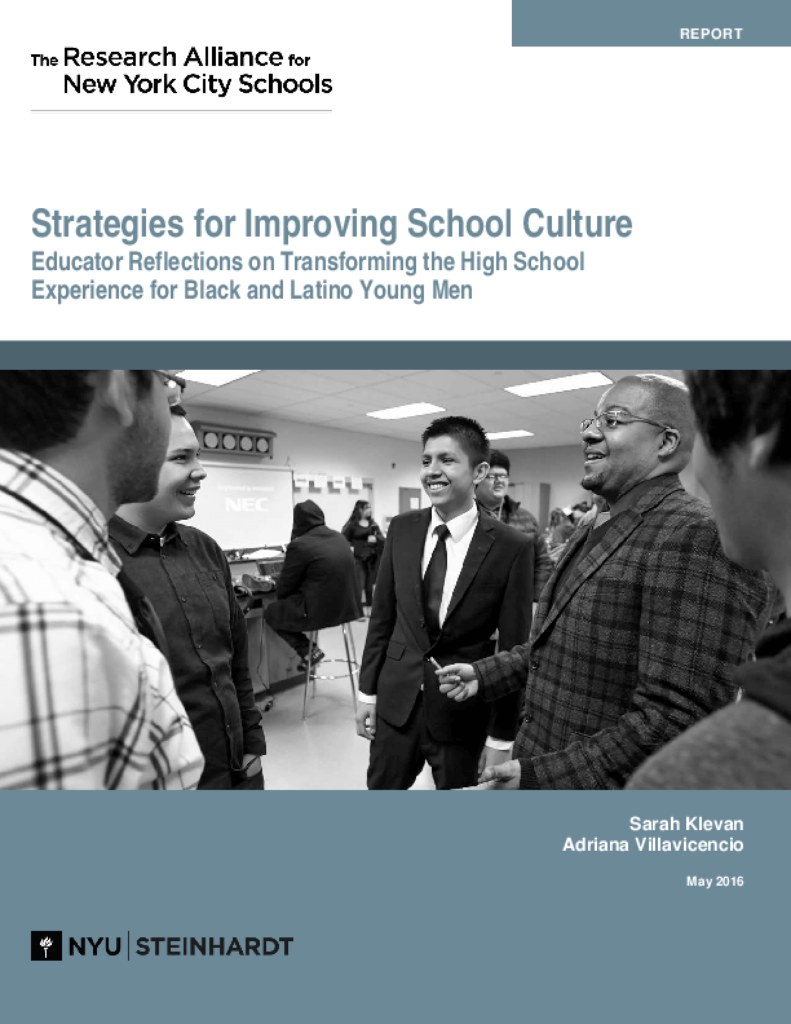 Strategies for Improving School Culture from the Research Alliance for New York City Schools educators reflections on transforming the high school experience for Black and Latino young men.
Strategies for Improving School Culture from the Research Alliance for New York City Schools educators reflections on transforming the high school experience for Black and Latino young men.
Video: Student Voices
A group of urban high school students from Baltimore, MD work together in four groups to design a 21st Century high school.
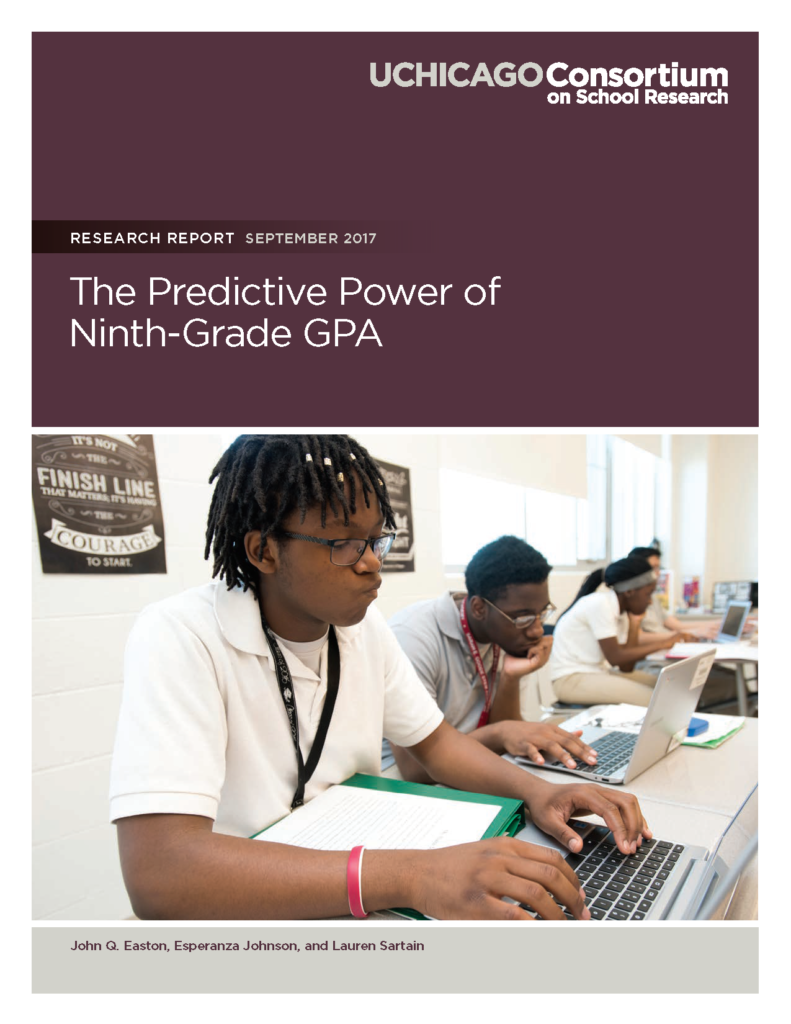 The Predictive Power of Ninth-Grade GPA high schools in Chicago Public Schools (CPS) emphasize the importance of freshman year, specifically the need for students to earn passing grades. There are two important aspects of this focus: its emphasis on freshman year, and its targeting of grades rather than test scores. A large body of research supports this approach. Much of the research has been conducted in Chicago, but has also been widely replicated across the country.
The Predictive Power of Ninth-Grade GPA high schools in Chicago Public Schools (CPS) emphasize the importance of freshman year, specifically the need for students to earn passing grades. There are two important aspects of this focus: its emphasis on freshman year, and its targeting of grades rather than test scores. A large body of research supports this approach. Much of the research has been conducted in Chicago, but has also been widely replicated across the country.
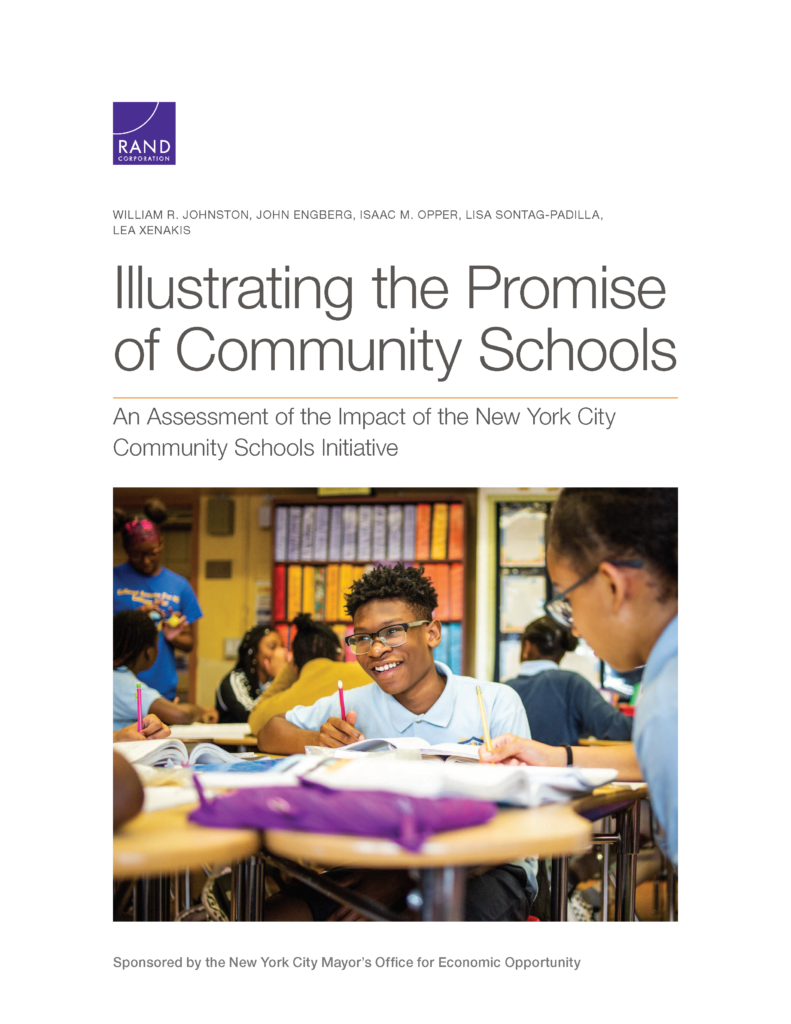 Illustrating the Promise of Community Schools-An Assessment of the Impact of the New York City Community Schools Initiative
Illustrating the Promise of Community Schools-An Assessment of the Impact of the New York City Community Schools Initiative
With the launch of the New York City Community Schools Initiative (NYC-CS) in 2014, the New York City Department of Education (NYCDOE) has increased its focus on the implementation of a holistic strategy of education reform to address the social consequences of poverty as a means to improving student outcomes. NYC-CS is a strategy to organize resources in schools and share leadership among stakeholders so that academics, health and wellness, youth development, and family engagement are integrated into the fabric of each school.
![]() A National and Across-State Profile on Adverse Childhood Experiences Among U.S. Children and Possibilities to Heal and Thrive Issue Brief this issue brief offers hope and a way forward so that all children and their families can attain optimal physical, social, and emotional development and well-being.
A National and Across-State Profile on Adverse Childhood Experiences Among U.S. Children and Possibilities to Heal and Thrive Issue Brief this issue brief offers hope and a way forward so that all children and their families can attain optimal physical, social, and emotional development and well-being.
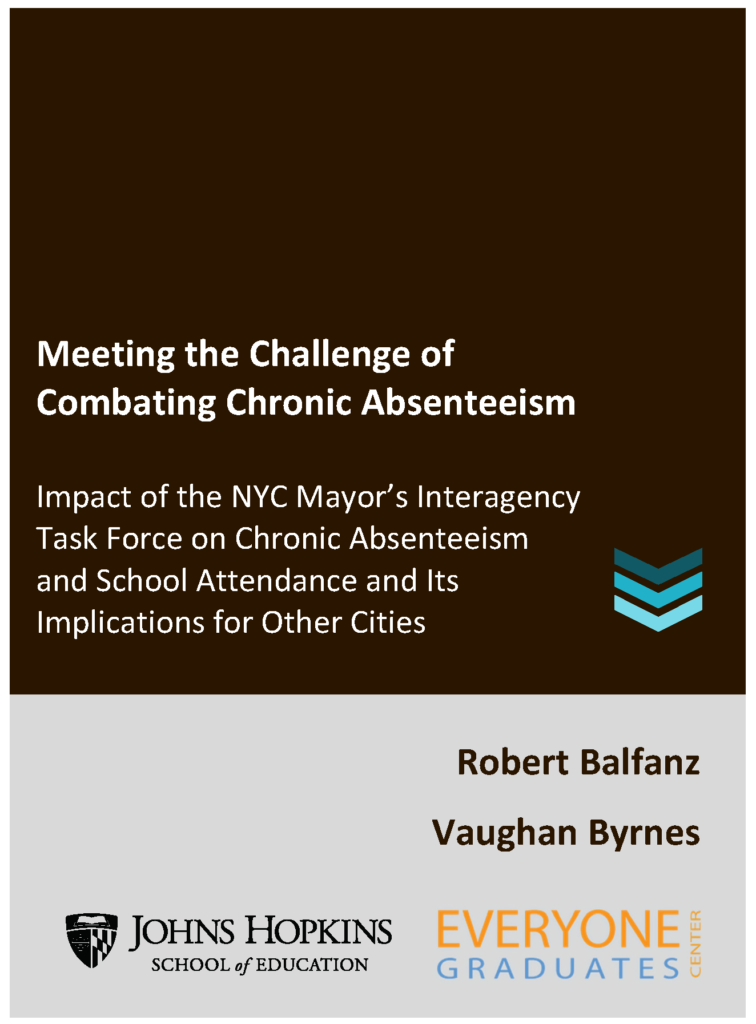 Meeting the Challenge of Combating Chronic Absenteeism from the Everyone Graduates Center at Johns Hopkins University School of Education examines the extent and nature of chronic absenteeism in New York City in schools with above‐average rates of chronic absenteeism which were the focus of the task force’s efforts. It investigates the impact of entering and exiting chronic absenteeism on academic outcomes. Finally, it examines the impact of the task force’s chronic absenteeism prevention and intervention programs on reducing chronic absenteeism and increasing school attendance – and what that means for other cities.
Meeting the Challenge of Combating Chronic Absenteeism from the Everyone Graduates Center at Johns Hopkins University School of Education examines the extent and nature of chronic absenteeism in New York City in schools with above‐average rates of chronic absenteeism which were the focus of the task force’s efforts. It investigates the impact of entering and exiting chronic absenteeism on academic outcomes. Finally, it examines the impact of the task force’s chronic absenteeism prevention and intervention programs on reducing chronic absenteeism and increasing school attendance – and what that means for other cities.
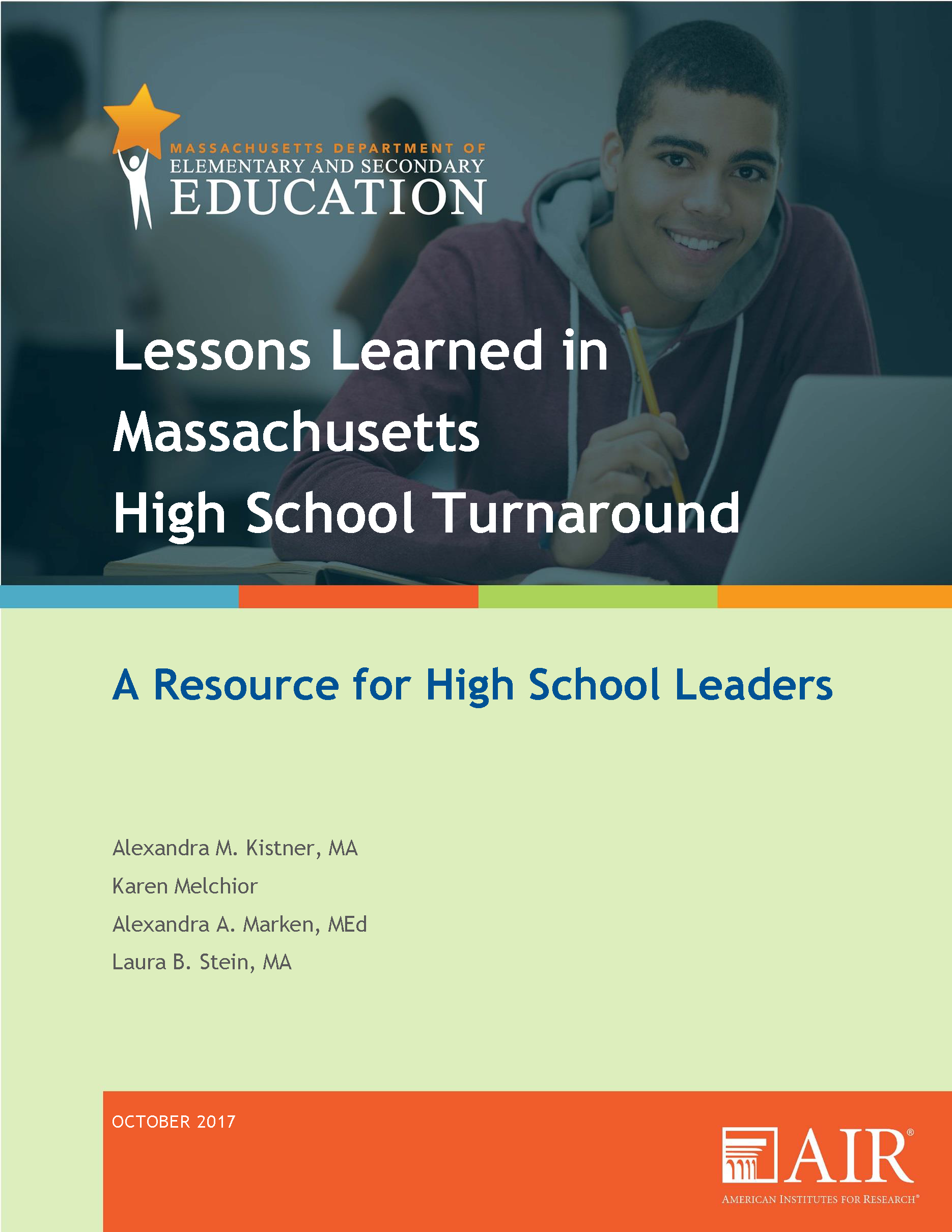 Lessons Learned in Massachusetts High School Turnaround a resource for high school leaders produced by Massachusetts Department of Elementary and Secondary Education and the American Institutes for Research.
Lessons Learned in Massachusetts High School Turnaround a resource for high school leaders produced by Massachusetts Department of Elementary and Secondary Education and the American Institutes for Research.
![]() Falling Off Track During the Transition to High School: What We Know and What Can Be Done by Ruth Curran Neild examines four theories about why ninth grade poses difficulties for some students.
Falling Off Track During the Transition to High School: What We Know and What Can Be Done by Ruth Curran Neild examines four theories about why ninth grade poses difficulties for some students.
![]() Not Too Late: Improving Academic Outcomes for Disadvantaged Youth from the Institute for Policy Research reports on a randomized controlled trial of a school-based intervention that provides disadvantaged youth with intensive individualized academic instruction.
Not Too Late: Improving Academic Outcomes for Disadvantaged Youth from the Institute for Policy Research reports on a randomized controlled trial of a school-based intervention that provides disadvantaged youth with intensive individualized academic instruction.
Implement Evidence-Based Practices
When beginning a redesign, one essential item is to consider how to keep students at the center of their educational experiences. Student apathy, lack of motivation, and behavior are factors underlying teacher stress and burnout. The longer students stay in school, the less hopeful they become regarding their educational experiences. This has resulted in higher rates of student and teacher absenteeism, higher rates of student suspension and less learning ultimately.
A shift that places students at the center can occur when redesigning schools, which aligns students’ interest with teachers and administrators desired outcomes.
The evidence-based suggestions offered here examine how to produce a change of ideas and practices within schools to align students’ interest with teachers and administrators desired outcomes. It also explores the importance of listening, valuing and implementing student voice in the decision-making process to achieve successful outcomes for all students. Underscored is the importance of developing agency with students and the balancing act that is needed to help foster agency within students.
THE MISSING METRICS: Emerging practices for measuring students’ relationships and networks A large nationwide study has found that teaching ninth graders to maintain a “growth mindset” toward learning—stressing that their minds are like muscles that can get stronger with use—can result in higher test scores. Download the Report
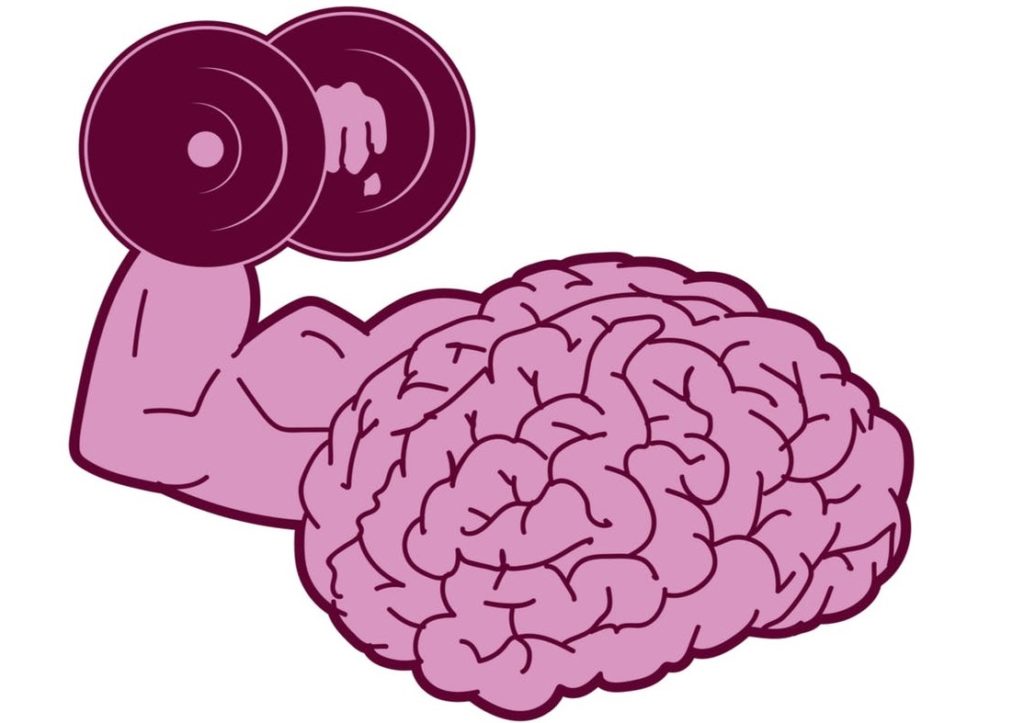 New Study Shows Where ‘Growth Mindset’ Training Works (And Where It Doesn’t) A large nationwide study has found that teaching ninth graders to maintain a “growth mindset” toward learning—stressing that their minds are like muscles that can get stronger with use—can result in higher test scores.
New Study Shows Where ‘Growth Mindset’ Training Works (And Where It Doesn’t) A large nationwide study has found that teaching ninth graders to maintain a “growth mindset” toward learning—stressing that their minds are like muscles that can get stronger with use—can result in higher test scores.
The study, published today in the journal Nature, is the largest and most rigorous test of whether mindset trainings can improve student performance. The concept is already well-known in education circles, and it has gained national attention thanks to books and TED talks by Carol Dweck, an education professor at Stanford University. Dweck is a co-author of the study released today. Read the article.
Download the Report (Adobe PDF)
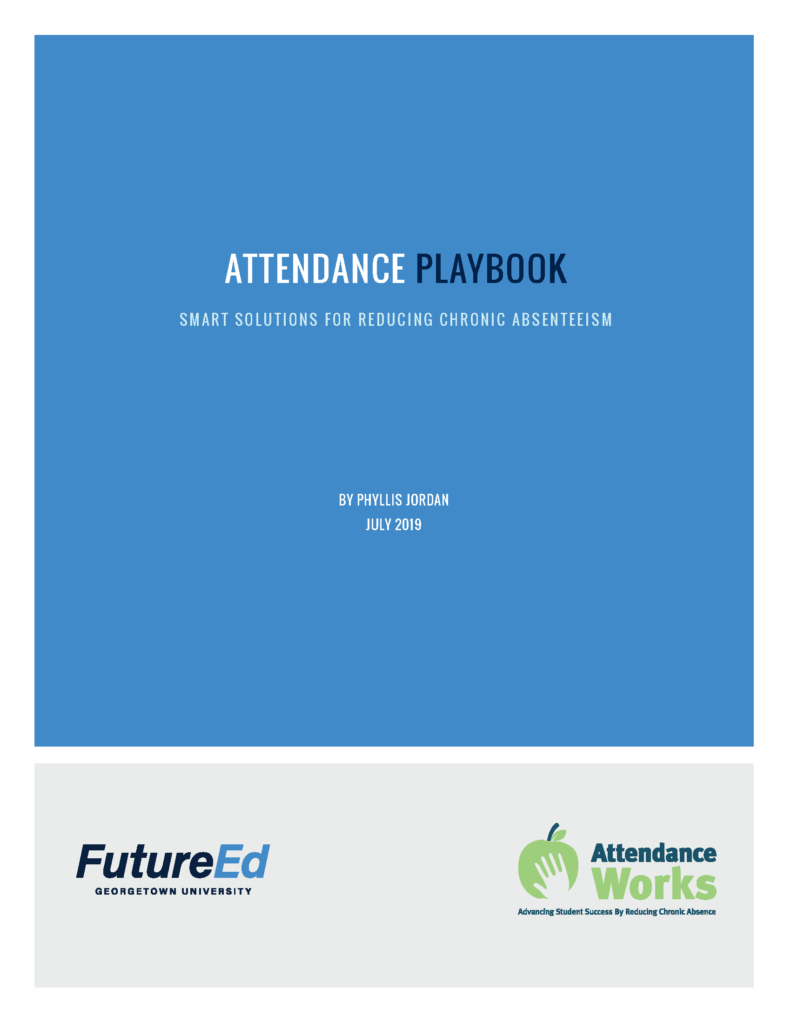 Attendance Playbook Smart Solutions for Reducing Chronic Absenteeism addresses absenteeism at the ground level, providing local policymakers and educators with nearly two dozen practical strategies for improving attendance that have strong track records and are in many instances easy to introduce and simple to scale. It explains each intervention, identify the problem it solves, summarize supporting research, and highlight schools or school districts that have used the strategy successfully. The list isn’t exhaustive, but it represents a substantial sample of the leading work and latest thinking on improving attendance.
Attendance Playbook Smart Solutions for Reducing Chronic Absenteeism addresses absenteeism at the ground level, providing local policymakers and educators with nearly two dozen practical strategies for improving attendance that have strong track records and are in many instances easy to introduce and simple to scale. It explains each intervention, identify the problem it solves, summarize supporting research, and highlight schools or school districts that have used the strategy successfully. The list isn’t exhaustive, but it represents a substantial sample of the leading work and latest thinking on improving attendance.
 Student Voice as a School Improvement Tool is a case study examining the exploration of the steps Graham School Science and Arts College in Scarborough England have taken to harness Student Voice and used it to inform whole school improvement through the creation of a Student Parliament.
Student Voice as a School Improvement Tool is a case study examining the exploration of the steps Graham School Science and Arts College in Scarborough England have taken to harness Student Voice and used it to inform whole school improvement through the creation of a Student Parliament.
Graham School is a larger than average secondary school in the coastal town of Scarborough. It is split over two sites; a Lower School for Years 7 & 8 and an Upper School for Years 9, 10 & 11. There are currently 1364 students on role and 43% of those are Pupil Premium. Click here for more opinions and views from students.
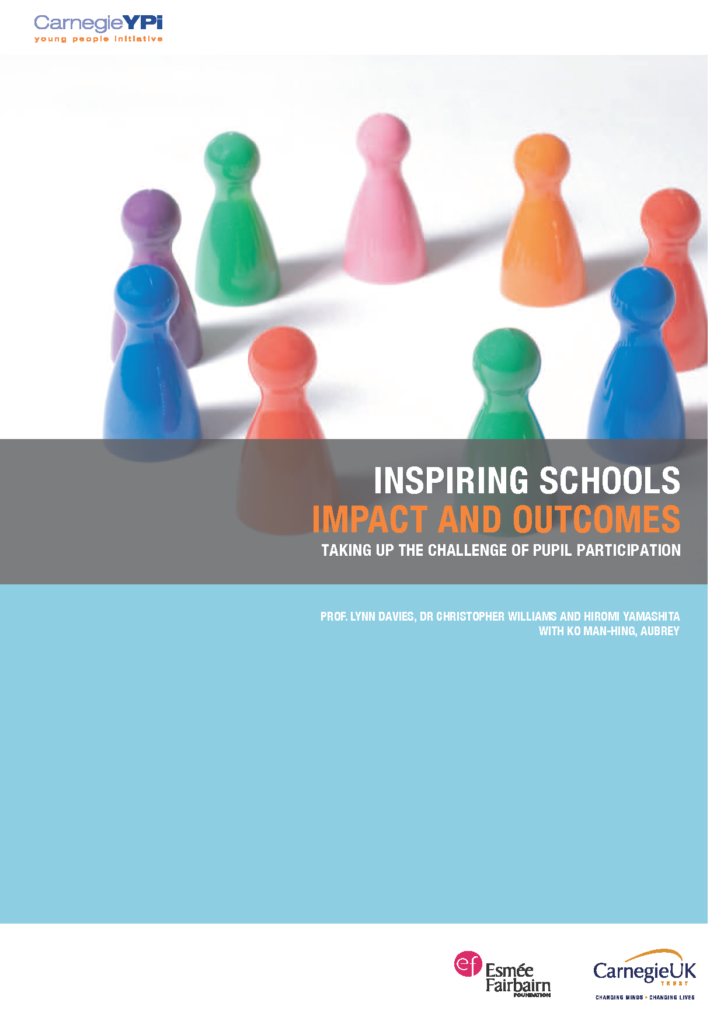 Inspiring School, Impact and Outcomes is a study to search for evidence of the impact of student participation in schools and colleges. It used a definition of participation as involvement in a collective decision-making process with a recognisable social and/or educational outcome.
Inspiring School, Impact and Outcomes is a study to search for evidence of the impact of student participation in schools and colleges. It used a definition of participation as involvement in a collective decision-making process with a recognisable social and/or educational outcome.
It therefore limited the search to:
- a focus on participation in decision-making (that is, not just any ‘taking part’ in school or lessons);
- a focus on impact and outcomes (that is, not just being descriptive of participatory activities, or evaluating materials and toolkits).
Seventy five studies, mainly from UK, but also internationally, were scrutinised. An annotated bibliography to support this study was produced and is published separately online (www.carnegie-youth.org.uk).
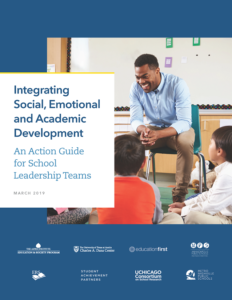 Integrating Social, Emotional, and Academic Development is an action guide provides school leadership teams with a resource for integrating the social, emotional and academic needs of young people into the daily student experience, from the time a bus driver greets a student until the end of the day. It supports the school leader and her/his team in mapping out an approach for integrating the social, emotional, and academic needs of students into the way adults and students experience school each moment of each school day.
Integrating Social, Emotional, and Academic Development is an action guide provides school leadership teams with a resource for integrating the social, emotional and academic needs of young people into the daily student experience, from the time a bus driver greets a student until the end of the day. It supports the school leader and her/his team in mapping out an approach for integrating the social, emotional, and academic needs of students into the way adults and students experience school each moment of each school day.
 The University of Chicago School of Social Service Administration’s Network for College Success maintains a free, searchable database of tools designed to aid educators in their quest to redesign their schools & keep students on track for graduation and beyond. Read more. . .
The University of Chicago School of Social Service Administration’s Network for College Success maintains a free, searchable database of tools designed to aid educators in their quest to redesign their schools & keep students on track for graduation and beyond. Read more. . .
CASEL and its collaborators developed The District Resource Center website to share learnings about systemic SEL implementation, including learnings, resources, tools, and artifacts curated from CDI districts. The website enables district leaders and educators around the country to access information about how these districts approached the work and overcame challenges, highlighting the successes they’ve achieved. Visit The District Resource Center
Don’t know where to start? Use DRC’s Priority Setting Questionnaire to reflect on your current SEL approach.
Using CASEL’s District Framework, you will be guided through an assessment of your current implementation status to help identify which areas are of highest priority for future focus. Begin the Priority Setting Questionnaire.
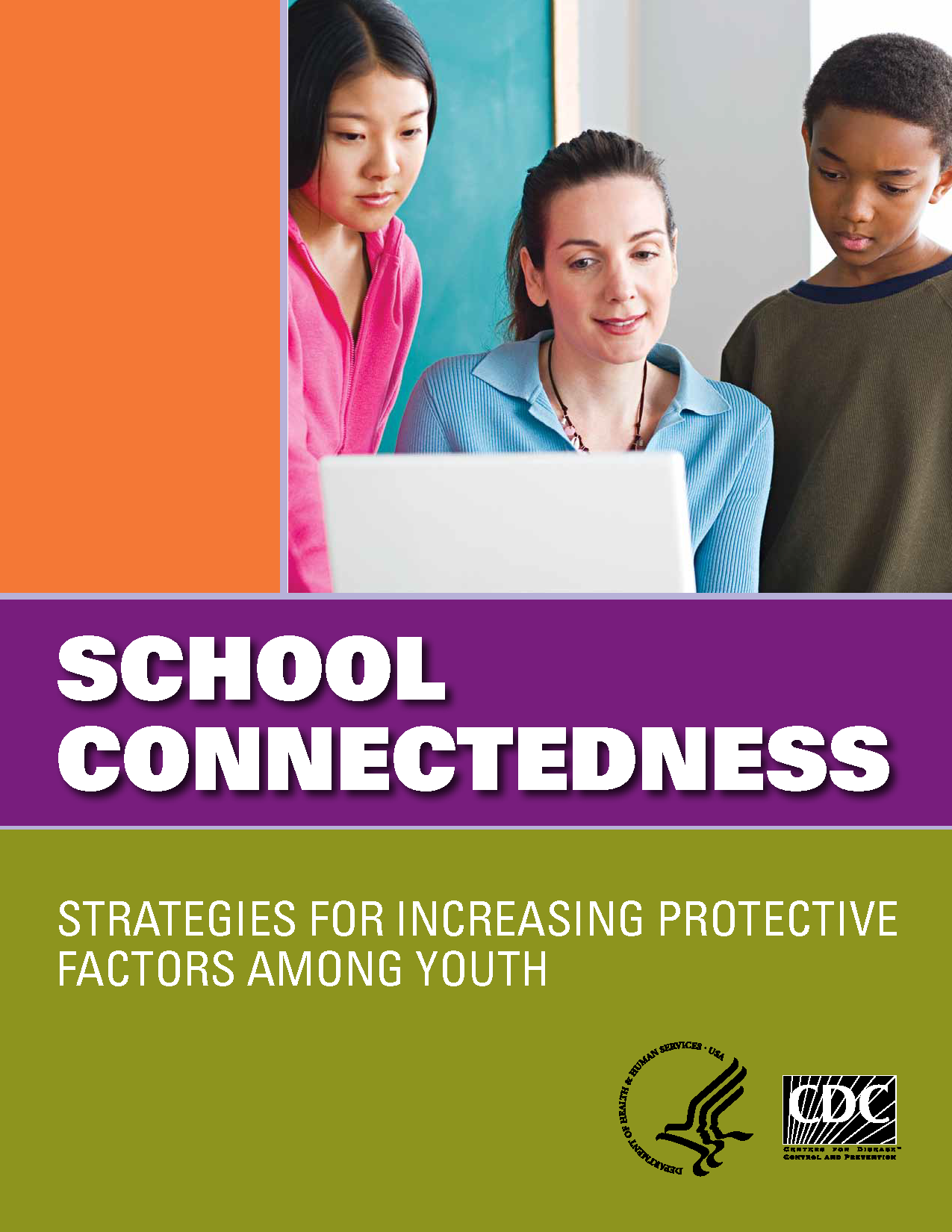 Efforts to improve child and adolescent health typically have featured interventions designed to address specific health risk behaviors, such as tobacco use, alcohol and drug use, violence, gang involvement, and early sexual initiation. However, results from a growing number of studies suggest that greater health impact might be achieved by also enhancing protective factors that help children and adolescents avoid multiple behaviors that place them at risk for adverse health and educational outcomes. Enhancing protective factors also might buffer children and adolescents from the potentially harmful effects of negative situations and events, such exposure to violence.
Efforts to improve child and adolescent health typically have featured interventions designed to address specific health risk behaviors, such as tobacco use, alcohol and drug use, violence, gang involvement, and early sexual initiation. However, results from a growing number of studies suggest that greater health impact might be achieved by also enhancing protective factors that help children and adolescents avoid multiple behaviors that place them at risk for adverse health and educational outcomes. Enhancing protective factors also might buffer children and adolescents from the potentially harmful effects of negative situations and events, such exposure to violence.
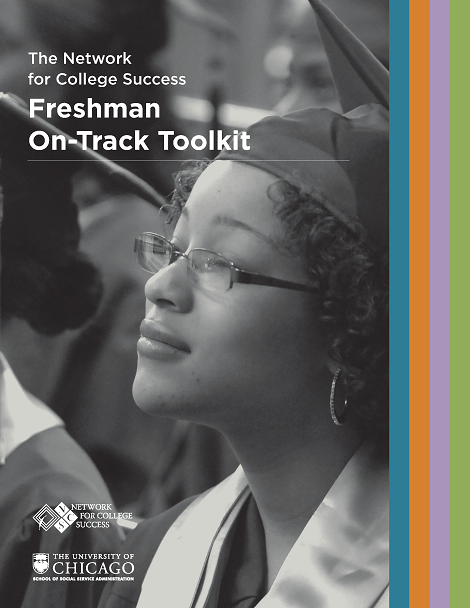 Freshman On-Track Toolkit prepared by the Network for College Success at the University of Chicago, the NCS Freshman On-Track Toolkit is a collection of protocols, reports, resources, and artifacts used by our experienced Coaches in their daily work to help schools better support students through the critical first year of high school.
Freshman On-Track Toolkit prepared by the Network for College Success at the University of Chicago, the NCS Freshman On-Track Toolkit is a collection of protocols, reports, resources, and artifacts used by our experienced Coaches in their daily work to help schools better support students through the critical first year of high school.
![]() Beyond the Indicators: An Integrated School-Level Approach to Dropout Prevention from the Mid-Atlantic Equity Center summarizes the research on why students drop out of school, explains the research implications for how to create an integrated dropout prevention strategy, and highlights an innovative pilot project that yielded results in a matter of months—a how-to example that works.
Beyond the Indicators: An Integrated School-Level Approach to Dropout Prevention from the Mid-Atlantic Equity Center summarizes the research on why students drop out of school, explains the research implications for how to create an integrated dropout prevention strategy, and highlights an innovative pilot project that yielded results in a matter of months—a how-to example that works.
 Springpoint published Designing New School Models, A Practical Guide in fall 2016, which outlines a three-phase process for new school model development, together with a set of planning tools for designers and leaders who want to engage in the work of doing school differently. The materials in the guide represent key insights gleaned from our work supporting school designers in the design, implementation, and iteration of new school models. For us, this work is anchored by three core priorities: young people, great practice, and iteration.
Springpoint published Designing New School Models, A Practical Guide in fall 2016, which outlines a three-phase process for new school model development, together with a set of planning tools for designers and leaders who want to engage in the work of doing school differently. The materials in the guide represent key insights gleaned from our work supporting school designers in the design, implementation, and iteration of new school models. For us, this work is anchored by three core priorities: young people, great practice, and iteration.
![]() Educational Experiences that Matter to Seniors Graduation from an Urban Early College High School preparing underrepresented students in urban settings for college and career is the focus of this study prepared by SAGE journals.
Educational Experiences that Matter to Seniors Graduation from an Urban Early College High School preparing underrepresented students in urban settings for college and career is the focus of this study prepared by SAGE journals.
![]() Reasons for Chronic Absenteeism Among Secondary Students This report presents information on the results of the Reasons for Chronic Absenteeism (RCA) Survey for secondary students. The data were collected directly from 5,790 chronically absent 6th-12th grade students in 8 states (CA, FL, IA, KY, ME, MI, MN, RI), 21 school districts, and 91 schools.
Reasons for Chronic Absenteeism Among Secondary Students This report presents information on the results of the Reasons for Chronic Absenteeism (RCA) Survey for secondary students. The data were collected directly from 5,790 chronically absent 6th-12th grade students in 8 states (CA, FL, IA, KY, ME, MI, MN, RI), 21 school districts, and 91 schools.
![]()
Video: The Education of Omarina
PBS’s program Frontline featured a story on Omarina. The video follows Omarina over a six year period and how an innovative program to stem the high school dropout rate affected her life’s journey.
CLICK TO ENLARGE
Featured Resource
Growth Mindset for
9th Graders
Many students hold debilitating beliefs about their intelligence. They believe things like, “I’m not smart enough” or “This subject just isn’t for me.” These beliefs can be especially damaging during the academically and socially challenging transition to high school.
Research shows, however, that schools can boost performance—particularly for students with a history of academic struggle—by helping students develop a growth mindset: the belief that they can develop their academic abilities through effective study strategies. Growth Mindset for 9th Graders is designed to help students understand that academic aptitude can be improved. Learn more about this free program.
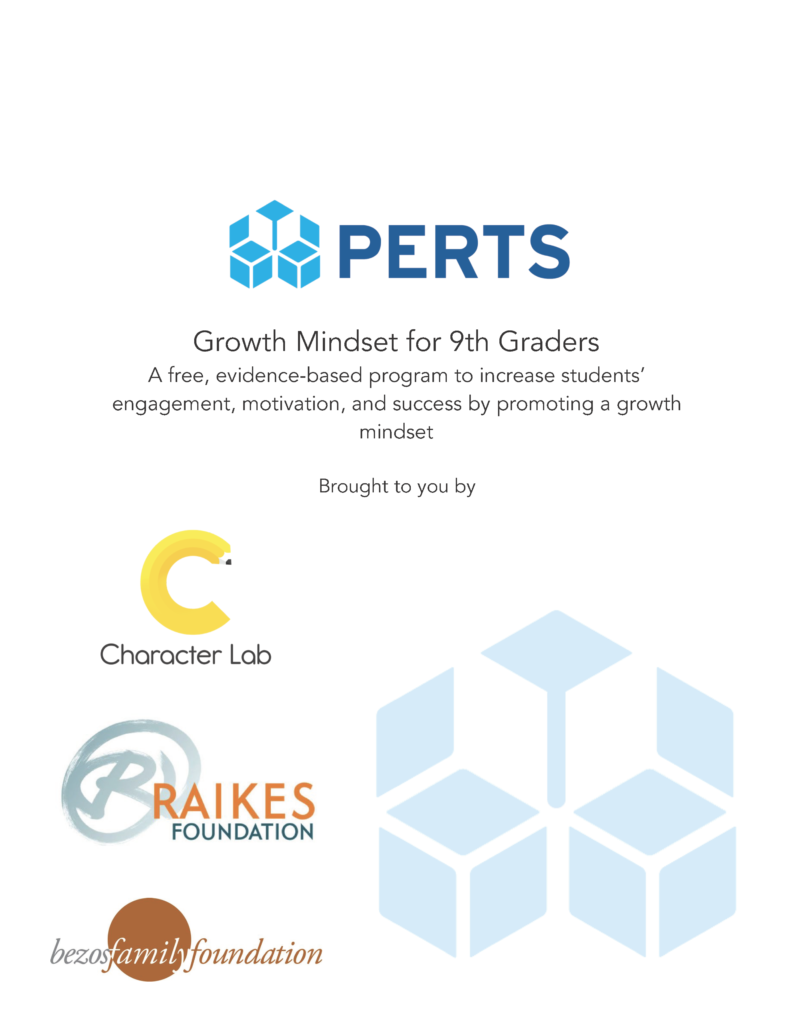 Download the Program Information Packet to learn more about the research and how to run Growth Mindset for 9th Graders at your school.
Download the Program Information Packet to learn more about the research and how to run Growth Mindset for 9th Graders at your school.
Featured Resource
Teacher’s Guide to Building a Restorative Classroom in this guide, you will both deepen your understanding of restorative justice (RJ) principles and philosophy, and learn strategies to help live these principles with your students.
See it in Action!
Austin Independent SD
Austin Independent School District (AISD) has succeeded in developing a model for systemic social and emotional learning (SEL) for all of its 83,600 students that focuses on explicit skills instruction, SEL integration, school climate and culture, and family and community engagement. SEL coaches funded by local and federal sources are deployed throughout the system. AISD’s SEL strategic plan, first approved in 2011 and revised for 2015-2020, drives SEL implementation. Using a vertical structure, Austin started with two high schools and their feeder schools. As of 2015-16, all 130 schools in the district are implementing SEL.
Download AISD’s Vision, Core Beliefs, and Value Statement (PDF)
Visit CASEL’s AISD profile page
Visit Austin Independent School District’s Website
Video: Report Card Conferences
Report Card Conferences are held between students and non-school affiliated adults. Caring adults, which are typically caring adults from the community, review a student’s report card along with their Attendance, Behavior, and Course Performance. RCCs give students the opportunity to speak with caring adults who reinforce the value of success in school and encourage them to get help when experiencing difficulty.
Podcast:
Student Agency & Engagement
Michele Cahill hosts a discussion with experts about how to co-create learning experiences with young people. Featuring: Travis Bristol, Research and Policy Fellow at the Stanford Center for Opportunity Policy in Education; Zak Malamed, Founder and Executive Director of Student Voice; Eliza Jane Schaeffer, Senior at Henry Clay High School.
Video: Students’ Voices/Students’ Visions
Students’ Voices/Students’ Visions is a ten-minute video featuring urban high school students from Baltimore, MD dicussing four topics:
- School Design
- Learning
- School & Community
- Business & Wealth
Podcast:
Staffing for Student-Centered Learning
Betsy Arons, Geneviève DeBose, Hillary Salmons, and Michele Cahill answer questions and discuss ways to find and retain the best talent for your school. Featuring: Betsy Arons CEO of Urban Schools Human Capital Academy Geneviève DeBose National Board Certified Teacher and Commissioner of National Commission on Teaching and America’s Future Hillary Salmons Executive Director of Providence After School Alliance.
Video: Redesigning Student Support Systems
Redesigning Student Support Systems is a six-minute video which examines how high schools can redesign their student support systems using the A-B-Cs of Attendance, Behavior and Course Performance.
Pathways to Adult Success
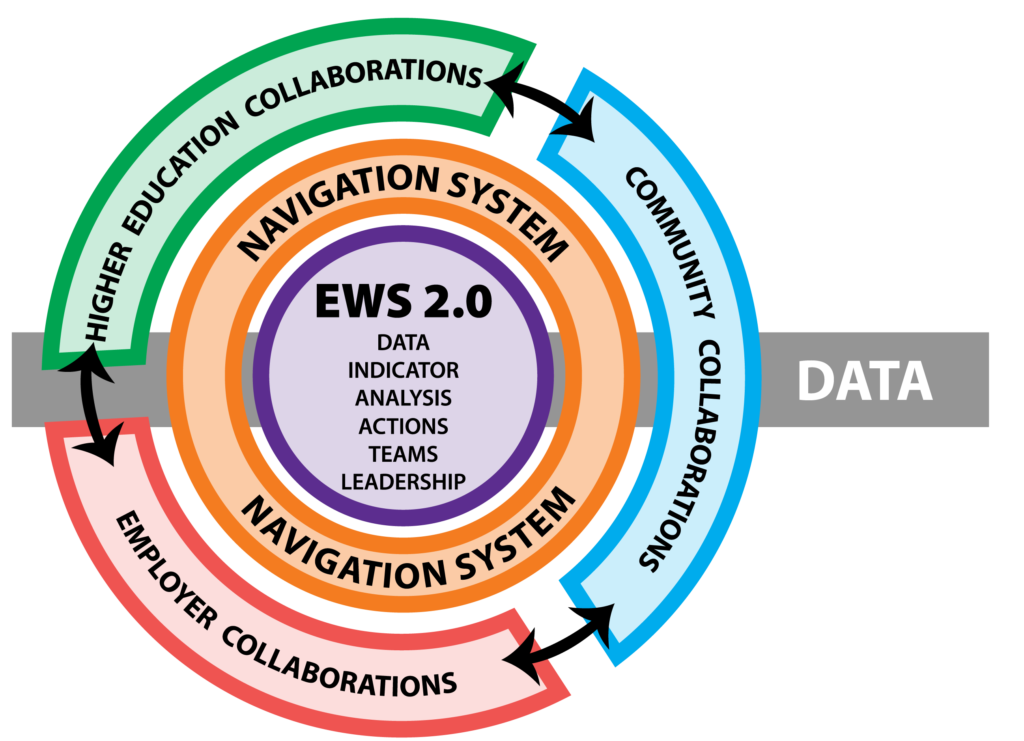 The vision of Pathways to Adult Success is for schools, their systems and communities to enable all youth, regardless of their needs, circumstances, place of residence, and prior experiences, to obtain the competencies needed to persist and complete secondary schooling and a post-secondary pathway that leads to a family-supporting wage and adult success. Visit their website.
The vision of Pathways to Adult Success is for schools, their systems and communities to enable all youth, regardless of their needs, circumstances, place of residence, and prior experiences, to obtain the competencies needed to persist and complete secondary schooling and a post-secondary pathway that leads to a family-supporting wage and adult success. Visit their website.
Learning from Stakeholder Voice: School Discipline examines the question, “What do students, families, and staff think about discipline and fairness at their school?” Read more. . .

